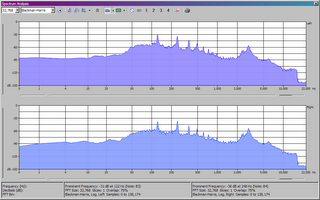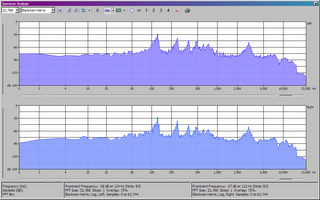Monday, March 12, 2007
Not the Dalai Lama
I did a little digging on the Internet when I went to go look for this recording, having had a desire to do what I could to clean up the sound as best I could in Sound Forge, at least to give it decent equalization and balance and to try to clean up some of the clipping (it was at some point in its life recorded such that the levels were too high and the audio saturated the recording device's inputs).
Through this digging I learned that the recording was actually supposedly of a Dutch man named Hein Braat, on a CD for commercial sale called "The Gayatri Mantra". The track selection in question that starts on the bootleg CD is called "Mrityonjaya Mantra". The letter accompanying the bootleg calls the disc the "Maha Mrityunjaya" Mantra.
To me the sample on the Isabella Catalog site sounded strikingly similar to the recording on the bootleg disc. I reported this fact to my Hendrickson Method of Orthopedic Massage class.
One response I got was that although the chant was the same, the voice sounded different. And that is actually true. It does sound different. The reason it sounds different is that it was recorded on one cassette player and played back on another one when it was transferred to CD. Cassette players are notorious for having poor accuracy in their playback speeds. They're meant to be 1.875 inches per second, but there are all kinds of tiny variances.
To see if it is indeed the same voice, I loaded the CD into Sony Media Software's Sound Forge, a professional-quality sound editing tool. Figuring I needed to correct a tape speed problem, I applied a tiny amount of pitch shift, without compensating for speed. I sped up the recording by 76.0 cents, which is 76% of one semitone (and there are 12 semitones to an octave). This is roughly equivalent to correcting for a cassette tape running at about 1.75 inches per second, or about 6% too slowly. I did this pitch shift by ear. For anyone who knows me well, that's about as good as you'll get. (I can't visit karaoke bars or watch American Idol because anything that's even slightly off-key hurts my ears.)
Next I used the Sound Forge spectrum analysis tool on one "Om" from each source. They did not come from the same "om" in the same place in the chant (rather, I just used the first one I came to in each) but each is the same pitch. I turned up the accuracy to a FFT (fast fourier transform) size of 32768, which is certainly adequate for a single voice in the 0-22050 Hz range. Here are the two graphs for comparison. First the bootleg CD:

Next, the sample of the professional CD from the online store:

Keep in mind that the bootleg CD suffers from heavy dropouts and distortion from spending some portion of its life on cassette. But notice the peaks in the singer's voice. These harmonics are different for every person's voice. We would certainly expect to see peaks for each note that was actually being sung, but the subtle characteristics are the most interesting things. Look, for example, at the peaks that appear between 1,000 and 2,000 Hz. No note in this frequency range is being sung in the "Om" syllable, so these are pure vocal harmonics, characteristic of the singer's voice.
In the bootleg CD, we find peaks at around 1000, 1104, 1245, 1344, 1498, 1600, 1745 and 1863 Hz. On the sample from the Braat CD, we find peaks at 1001, 1046, 1104, 1232, 1344, 1498, 1600, 1764, 1863 and 1925 Hz. It isn't particularly surprising that we would find more peaks from a higher quality source. The fact that so many of these vocal harmonic frequencies match exactly (or extremely nearly) and even follow a nearly identical amplitude curve strongly suggests that it is the same voice in both recordings.
Much as I'd love for the Dalai Lama story to be true, I'm convinced that it is false.
Labels: chain letter, dalai lama, healing chant, urban legend
Subscribe to Posts [Atom]
